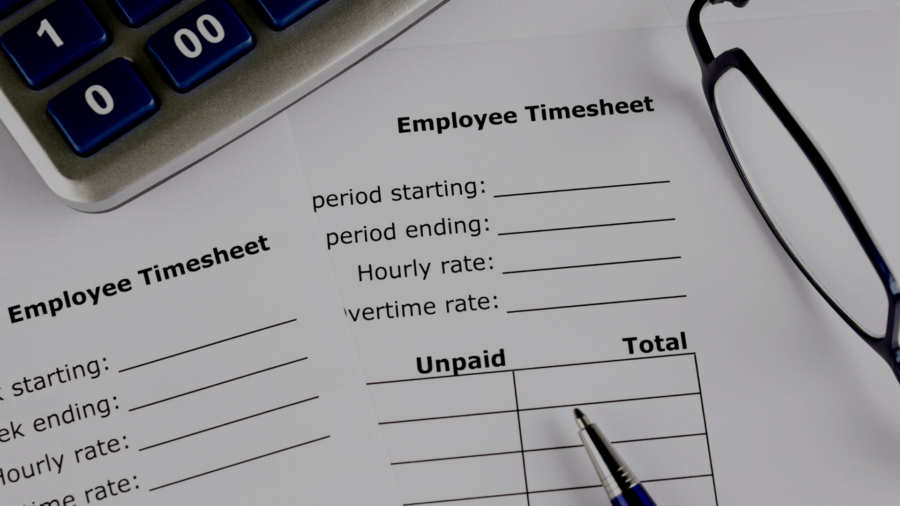One of the major challenges business owners faces in timesheet processing is errors! When the errors are repeated continuously over time, these small intractable errors gradually impact your ability to process information accurately. If you have any exposure to timesheet processing, this list of errors may prove a significant asset for tracking your processes.
This article provides an overview of the various mistakes and errors made while entering, editing and sorting data on a timesheet.
So, let’s get started and explore these errors in detail.
1. Incorrect Rates
The payroll mistakes are so common that even a little overview can trace the error. Often, employees are overpaid or underpaid than the expected salary due to underestimated employee pay rates. A similar blunder often happens with the overtime rates of the employees. The overtime per hour is charged on rates such as double or one-half the employees’ regular rates. So, even a slight error of 0.1 can lead to significant drift in the expected salary.
2. Incorrect AWR dates
The Agency Workers Regulations (AWR) dates can be essential for temporary agency workers for all entitlements under AWR after the qualifying period. The manual errors in setting up this date correctly or any errors in absence dates can affect the 12 week qualifying period considerably delaying the basic pays, bonus, allowance, etc. An automated system like Bill My Task can help reduce these errors for the employees’ uninterrupted duration and payment.
3. Pension Opt-in and Opt-out errors
Another Common manual mistake by staff is during pension calculations. Staff happen to enter incorrect data or miss out important data of opt-in and opt-out dates of pensioners. If the staff misses out the employee’s important emails or messages regarding the pensioners’ opt-out date. This mistake can result in extra deductions from the employee salary until recognized otherwise. This simple error can call for additional efforts in reverting the deducted money and further work to make the employee correct pension contribution.
4. Charged to wrong clients
The temp staffing employees are continuously on a roll from one client to another. Any staffing errors in switching the employee sheet to the next client can reflect a hefty amount in the client payment amount. Employees enter the total number of hours they work before submitting it for approval at the end of each pay period. And hasty manual errors can affect the company image as a reliable partner at large. Hence, maintain automated software for client invoice calculation to avoid any mistakes with the client’s payments.
5. Missing Holiday Pay
Every timesheet processing needs to consider only the Administrative tasks or hours for the payment hours. For example, the employee holiday period, training hours and administrative projects might or might not be part of the system. However, this information needs to be considered in the monthly timesheet calculation as per the employer’s rules. Custom fields allow you to enter day/time for specific tasks, projects and activities in a timesheet, but this is most often subtly ignored, and forwarded to payroll processing resulting in missing holiday pays.
6. Time-in And Time-out Are Miscalculated
Maintaining accuracy in clocking in and out data of workdays is crucial to the pockets of your company. If the calculations are incorrect, the company is paying more or less than how much it needs to pay its employees. When the total daily working hours are calculated without including breaks, the total number of hours is drastically higher. Due to the inconsideration of break timing data, the company might end up paying way more to its employees than expected salaries.
7. Missing Special Rates
If any organization has additional overtime rates for special holidays, many mistakes can happen. In manual timesheet processing, errors in the calculation are bad enough, but the worst case is not considering it at all. The timesheet processing staff must process all the employee payrolls at the month-end, including the applicable special rates. But the bulk processing of pay rates can lead to missing out on the additional special rates that reflect considerably in the employee’s salary slip.
As you see, there are numerous reasons why errors occur during timesheet processing. And the best way is to avoid making these mistakes in your company’s timesheets by automating your system with efficient softwares and performing regular audits whenever possible
Bill MyTask can help you manage your timesheet right from entry to approval and processing to invoice generation automatically. With this software, your employees can enter time from their Mobile App for immediate approvals and quick processing. Upgrade your business system with the latest technology to manage a flawless timesheet for your employees.


